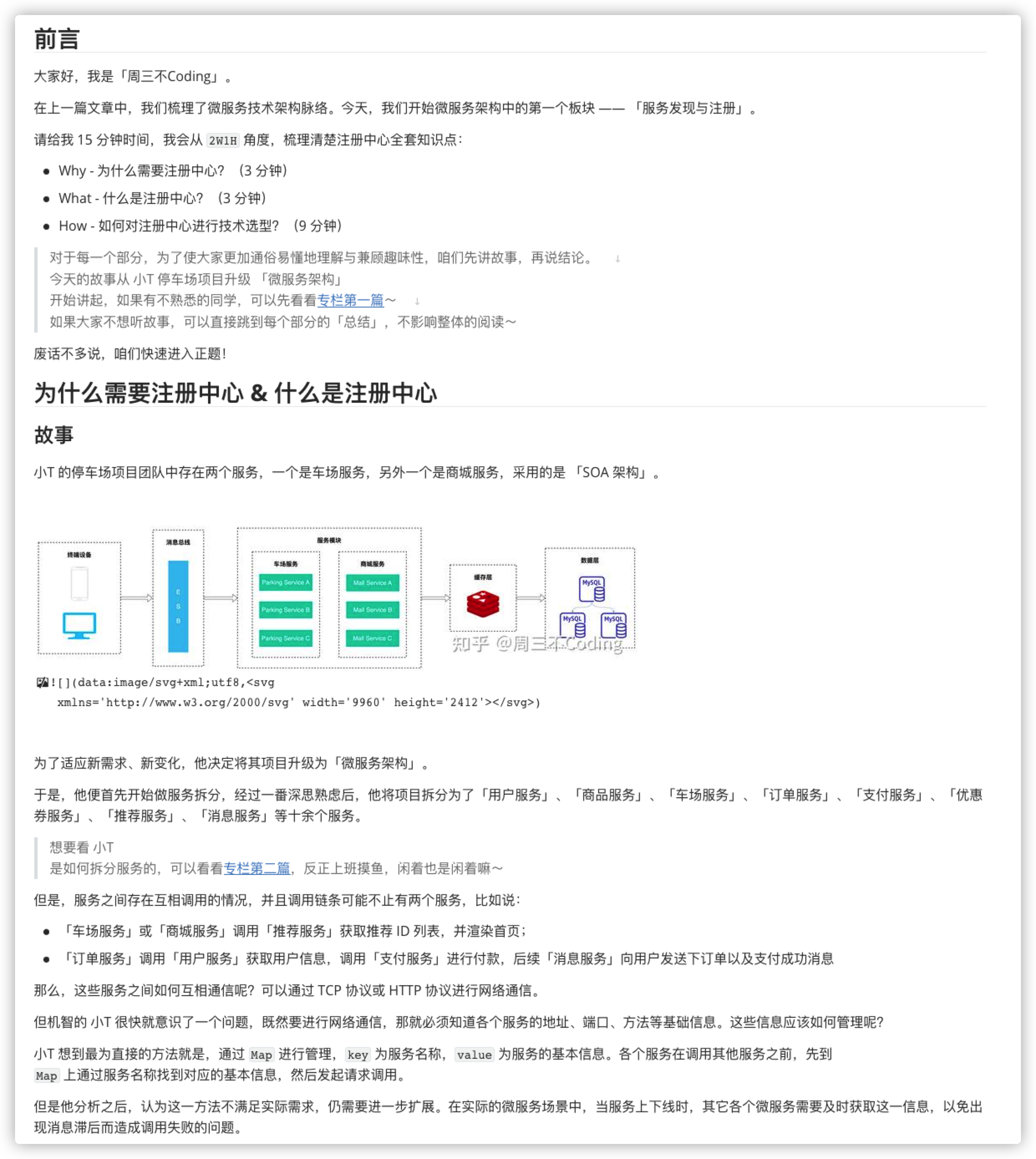耗时 3 个小时,我用 Python 做了一个轻松爬取各大网站文章并输出为 Markdown 的工具!
前言
大家好,我是「周三不Coding」。
最近摸鱼看技术文章的时候,突然想到了两个需求,想与大家分享一下:
- 爬取各大技术网站的文章,转化为 Markdown 格式,防止文章由于不明原因下架。这样可以在本地保存一些高质量文章。
- 整理自己过去发布的文章。(我之前写的一些文章并没有在本地备份)
说干就干,我用了几个小时,编写并发布了一个文章爬取工具:Article Crawler,
接下来,我给大家分享一下我的制作过程!
其中包含详细的 README 文档
Github 地址:https://github.com/ltyzzzxxx/article_crawler
PyPi 地址:https://pypi.org/project/article-crawler/
需求分析与技术选型
对于爬取类的需求来说,我毫不犹豫地选择了 Python 来编写代码,毕竟一提到爬虫,大家第一反应就是 Python。它确实很方便,提供了很多方便快捷的包。
我们首先拆解一下需求,来确定最终需要使用的 Python 包。
- 从某个网站中爬取文章,需要定位文章的位置。网站中除了文章信息之外,可能还有推荐信息、作者信息、广告信息等。因此,我们需要将整个网站内容爬取下来,并从中搜索得出文章的内容。
- 将 HTML 文章内容转换 Markdown 格式,并输出到本地指定目录中。
对于第一个需求,我们使用 request 与 BeautifulSoup 包。
-
使用 request 包向指定网站发送请求,获取其 HTML 内容。
-
使用 BeautifulSoup 包在指定 HTML 内容中,查找对应的文章内容。
Beautiful Soup 是一个可以从 HTML 或 XML 文件中提取数据的 Python 库。它能够通过你喜欢的转换器实现惯用的文档导航 / 查找 / 修改文档的方式。Beautiful Soup 会帮你节省数小时甚至数天的工作时间。
对于第二个需求,我们使用 html2text 包。
- 使用 html2text 包,将指定的 HTML 文章内容,渲染为对应的 Markdown 格式。
总结技术栈如下:
| 技术栈 | 作用 |
|---|---|
| request | 向指定网站发送请求,获取 HTML 内容 |
| BeautifulSoup (bs4) | 快速从 HTML 内容中依据指定条件查找内容 |
| html2text | 将指定的 HTML 内容染为 Markdown 格式 |
实现方案
实现流程图如下:

对于这一系列流程,我将其抽象为一个类 ArticleCrawler。
具体代码位于
article_crawler/article_crawler.py文件中
其初始化 __init__ 方法如下:
def __init__(self, url, output_folder, tag, class_, id=''):
self.url = url
self.headers = {
'user-agent': random.choice(USER_AGENT_LIST)
}
self.tag = tag
self.class_ = class_
self.id = id
self.html_str = html_str
if not os.path.exists(output_folder):
os.makedirs(output_folder)
print(f"{output_folder} does not exist, automatically create...")
self.output_folder = output_folder
-
url:指定网站地址 -
output_folder:输出目录 -
tag / class_ / id:用于定位文章在网站中所处的位置。-
举个🌰,我们通过
F12打开网站控制台,定位文章被该标签包裹:<div id="article_content" class="article_content clearfix"></div>在这里,对应的
tag为div,class_为article_content clearfix,id为article_content。
-
类中主要包含如下 3 个方法:
-
send_request:向指定网站发送请求,获取其 HTML 内容。
def send_request(self, url): response = requests.get(url=url, headers=self.headers) response.encoding = "utf-8" if response.status_code == 200: return response -
parse_detail:通过 BeautifulSoup 定位文章位置,获取到对应的 HTML 内容。
def parse_detail(self, response): html = response.text soup = BeautifulSoup(html, 'lxml') content = soup.find(self.tag, id=self.id, class_=self.class_) html = self.html_str.format(article=content) self.write_content(html, 'article') -
write_content:将 HTML 和 渲染得到的 Markdown 文本写入到指定的目录
output_folder中。def write_content(self, content, name): if not os.path.exists(self.output_folder + '/HTML'): os.makedirs(self.output_folder + '/HTML') if not os.path.exists(self.output_folder + '/MD'): os.makedirs(self.output_folder + '/MD') name = self.change_title(name) html_path = os.path.join(self.output_folder, "HTML", name + ".html") md_path = os.path.join(self.output_folder, "MD", name + ".md") with open(html_path, 'w', encoding="utf-8") as f: f.write(content) print(f"create {name}.html in {self.output_folder} successfully") html_text = open(html_path, 'r', encoding='utf-8').read() markdown_text = html2text.html2text(html_text) with open(md_path, 'w', encoding='utf-8') as file: file.write(markdown_text) print(f"create {name}.md in {self.output_folder} successfully")
优化
在 ArticleCrawler 中,我们需要自己去网站中查找文章元素,并指定 tag / class_ / id 属性,这样比较麻烦。
日常学习中,我们会经常使用几个网站,如:CSDN、掘金、知乎、简书等,于是我将这几个常用的网站抽取成单独的类,作为 ArticleCrawler 的子类。
其中需要改变的方法为 __init__ 与 parse_detail,将 tag / class_ / id 属性写死,不需要人为指定。
命令方式运行
我们通过命令的方式使用该工具,因此我们需要指定一个程序入口 __main__ 文件:
- 我们通过 OptionParser,指定命令参数详情,其中包含包描述、版本号、参数简写、参数名、帮助手册等信息。
if __name__ == '__main__':
from optparse import OptionParser
parser = OptionParser(prog=prog, description=description, version='%prog ' + version, usage=usage)
parser.add_option("-u", "--url", dest="url", help="crawled url (required)")
parser.add_option("-t", "--type", dest="type", default="",
help="crawled article type [csdn] | [juejin] | [zhihu] | [jianshu]")
parser.add_option("-o", "--output_folder", dest="output_folder",
help="output html / markdown / pdf folder (required)")
parser.add_option("-w", "--website_tag", dest="website_tag",
help="position of the article content in HTML (not required if 'type' is specified)")
parser.add_option("-c", "--class", dest="class_", default="",
help="position of the article content in HTML (not required if 'type' is specified)")
parser.add_option("-i", "--id", dest="id", default="",
help="position of the article content in HTML (not required if 'type' is specified)")
options, args = parser.parse_args()
main()
- 进入
main方法中,我们需要依据代码逻辑,对参数进行额外校验,如:空参数异常、参数错误异常等url与output_folder不得为空type / website_tag / class_ / id不得同时为空type必须在指定的类型内- 参数校验完毕后,创建对应的类对象,并执行
start方法
def main():
url = options.url
type = options.type
output_folder = options.output_folder
website_tag = options.website_tag
class_ = options.class_
id = options.id
if not url:
parser.error("url must be specified.")
if not output_folder:
parser.error("output folder must be specified.")
if type == "" and website_tag == "" and class_ == "" and id == "":
parser.error("'type', 'website_tag', 'class_', 'id' cannot be empty at the same time.")
if type not in ["csdn", "juejin", "zhihu", "jianshu"]:
parser.error(
"The current article type is not supported, you need to specify 'class_' or 'id' to locate the position of the article.")
if type != '':
crawler = class_dic[type](url=url, output_folder=output_folder)
else:
crawler = ArticleCrawler(url=url, output_folder=output_folder, tag=website_tag, class_=class_, id=id)
crawler.start()
最终效果
最终,我们将其打包发布到 pypi 中,并重新安装到本地,执行命令:
pip install article-crawler
python3 -m article_crawler -u https://zhuanlan.zhihu.com/p/644525159 -o /Users/lty/Downloads/article_output -t zhihu
其实现效果如下:

我们打开输出的 Markdown 文件,看看效果:

大家可以看到,除了换行问题外,其它部分的转换效果还是很不错的,基本与原文一致~
总结
今天,我从需求分析、技术选型、实现方案、优化、效果展示等角度,从 0 到 1 实现了 Article Crawler 工具,并向大家介绍了详细的实现过程。
代码和包已经开源,大家感兴趣的可以去使用一下,如果有问题的话,麻烦提一下 Issue 呀~地址如下:
- Github 地址:https://github.com/ltyzzzxxx/article_crawler
- PyPi 地址:https://pypi.org/project/article-crawler/
对于如何从 0 到 1 发布一个 Pypi 包,我会再下一篇文章中,详细进行介绍~
今天的内容就到这里啦,大家觉得有用的话麻烦帮忙点个赞、点个 Star 支持一下呀,下期再见!






















 1016
1016











 被折叠的 条评论
为什么被折叠?
被折叠的 条评论
为什么被折叠?










